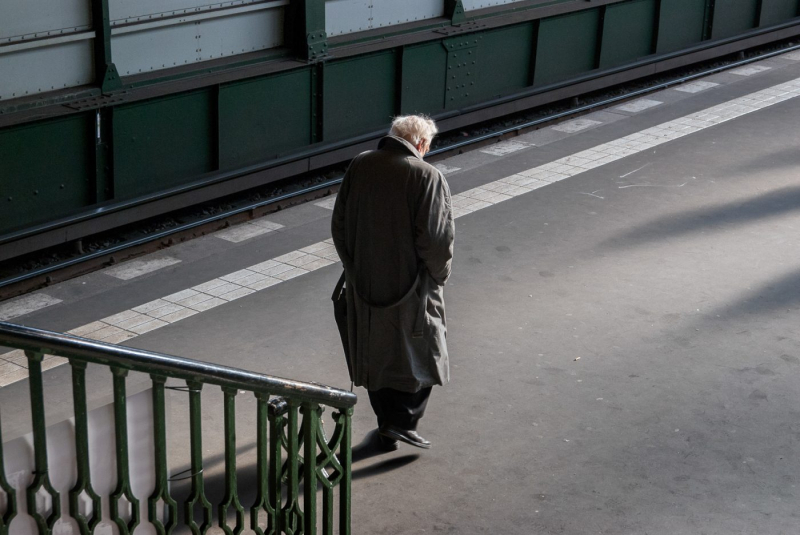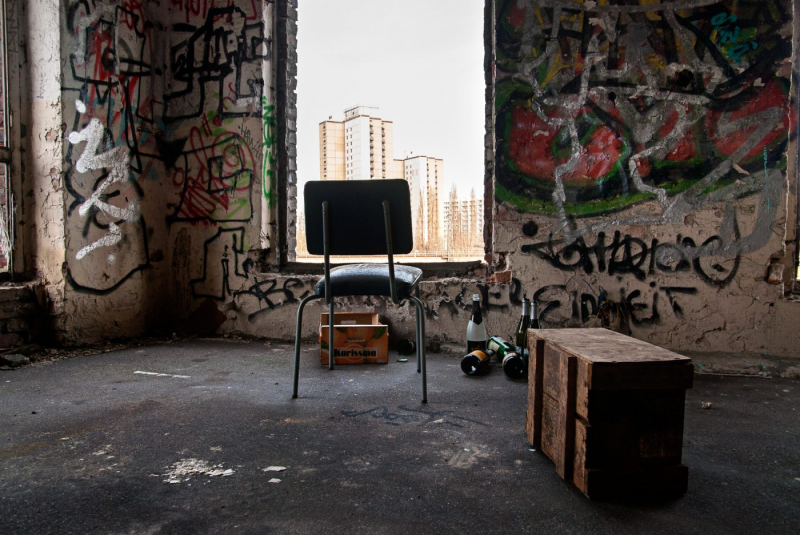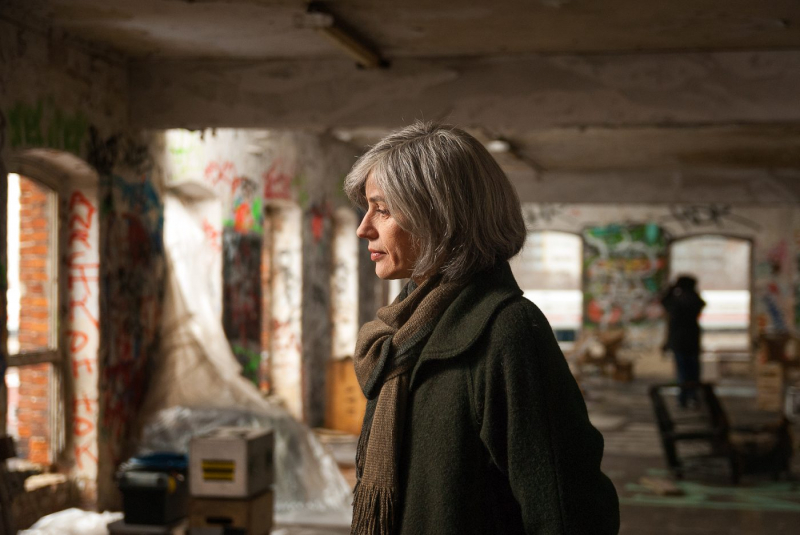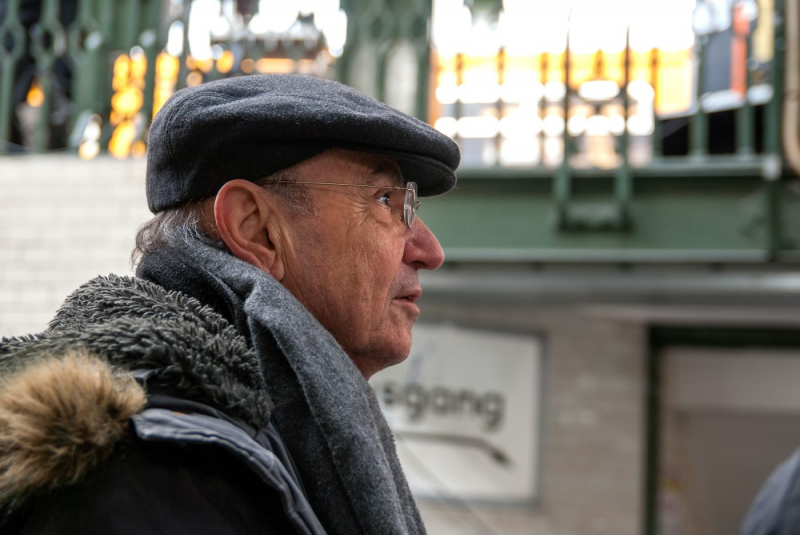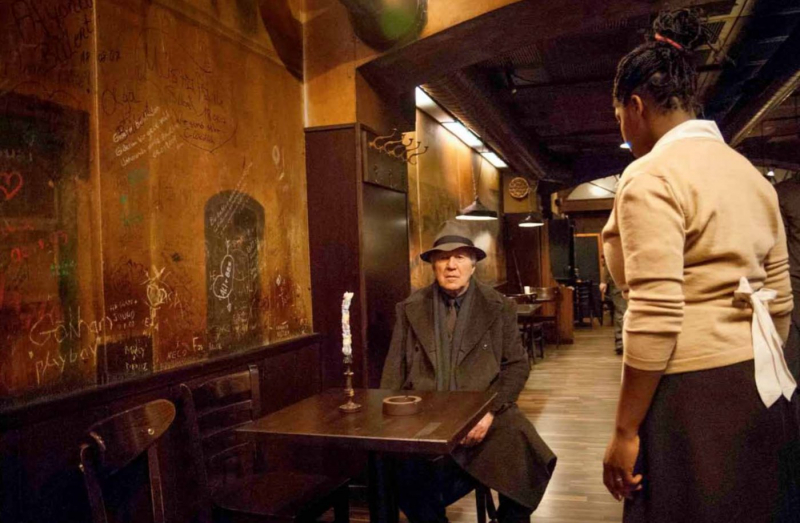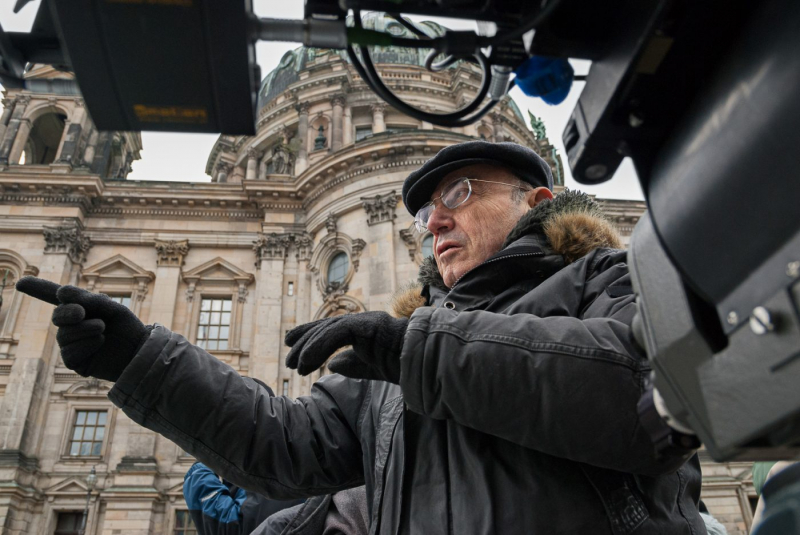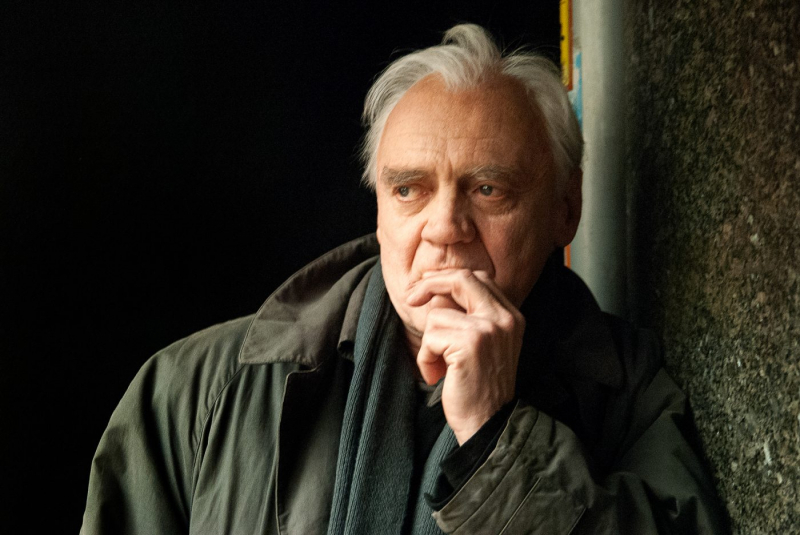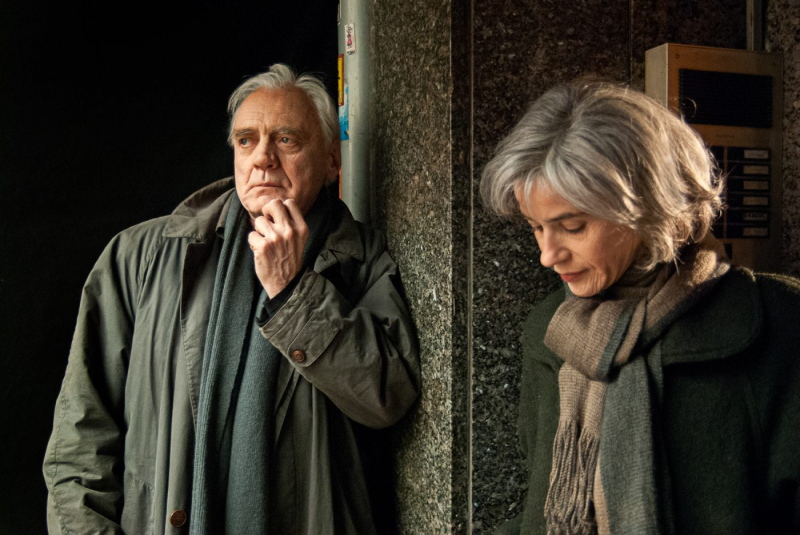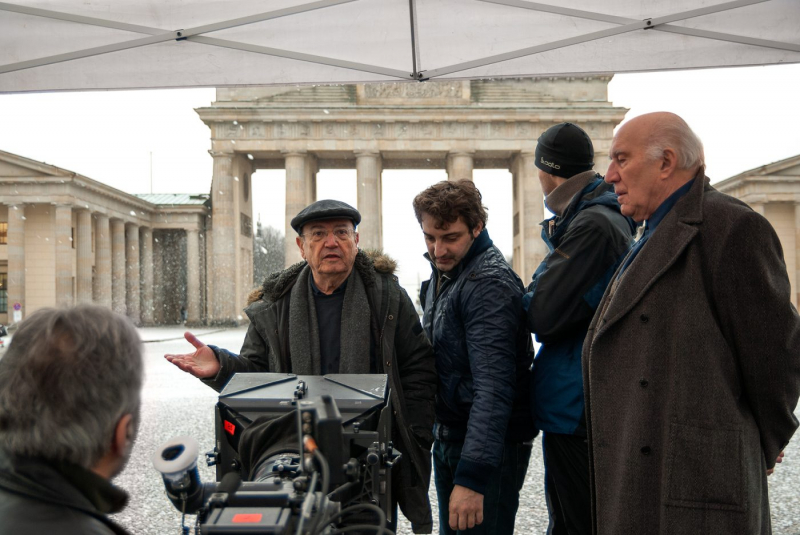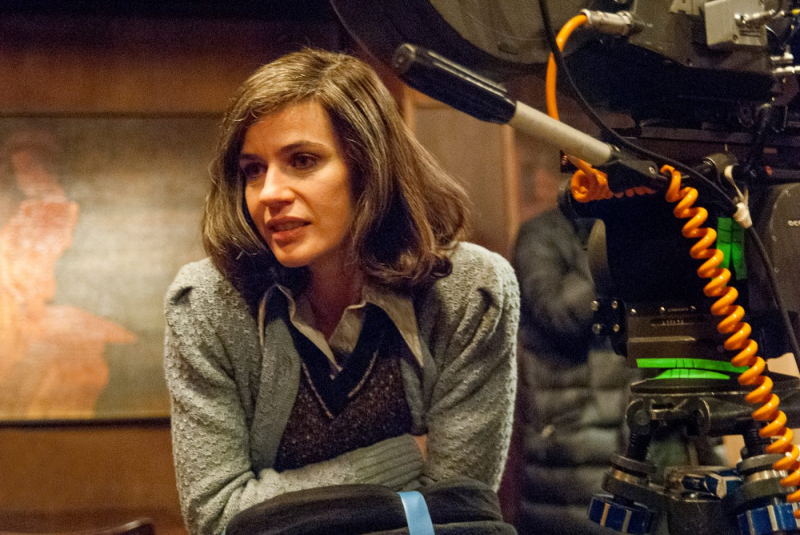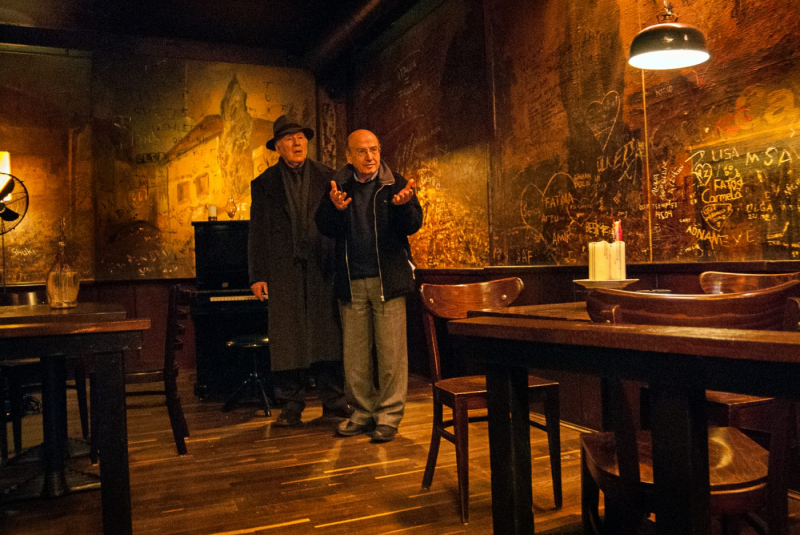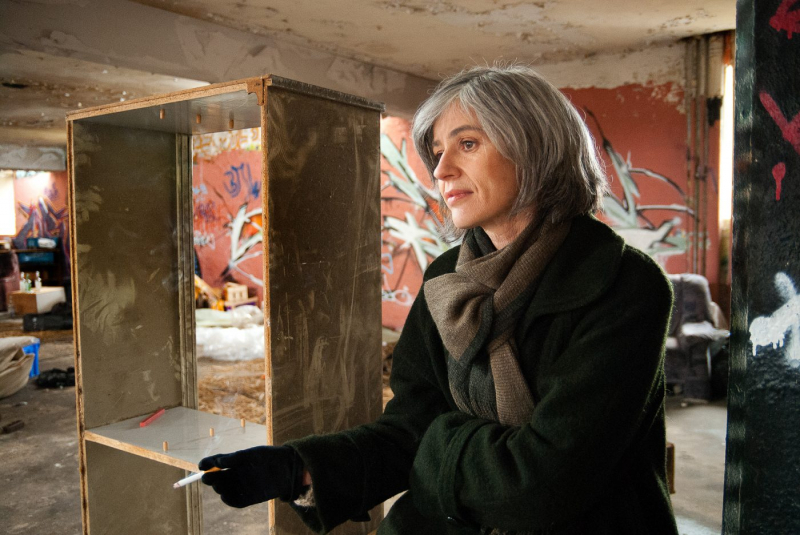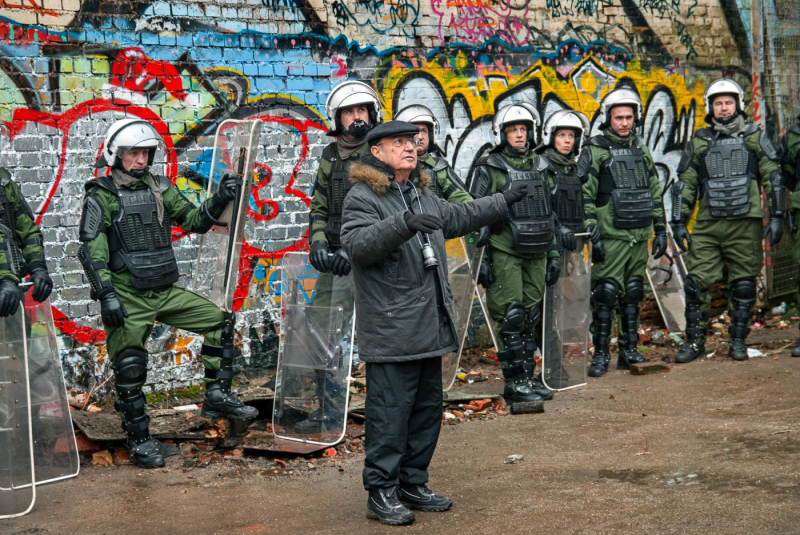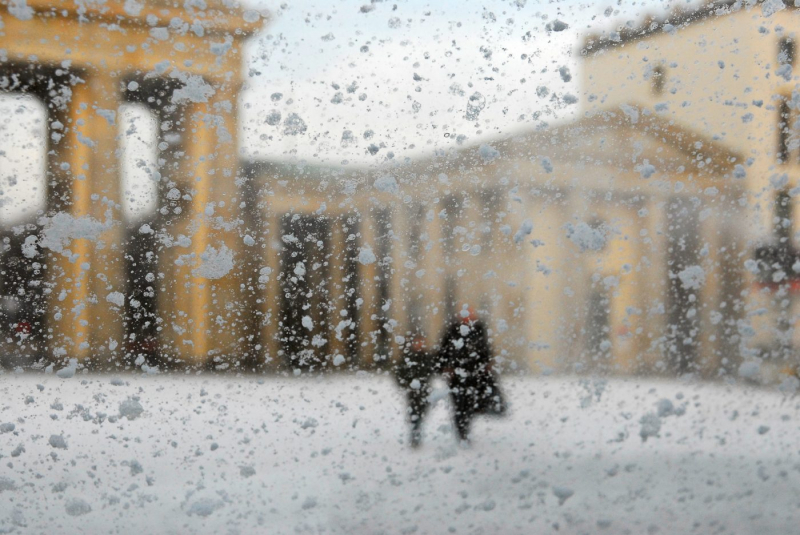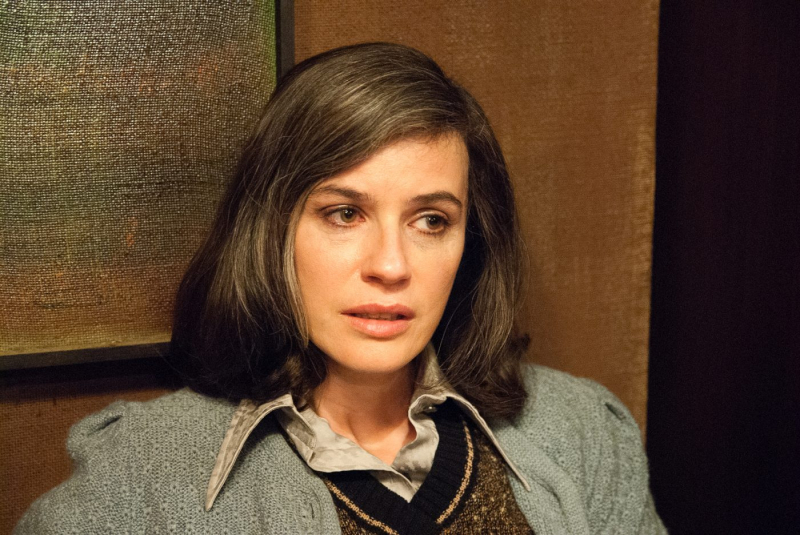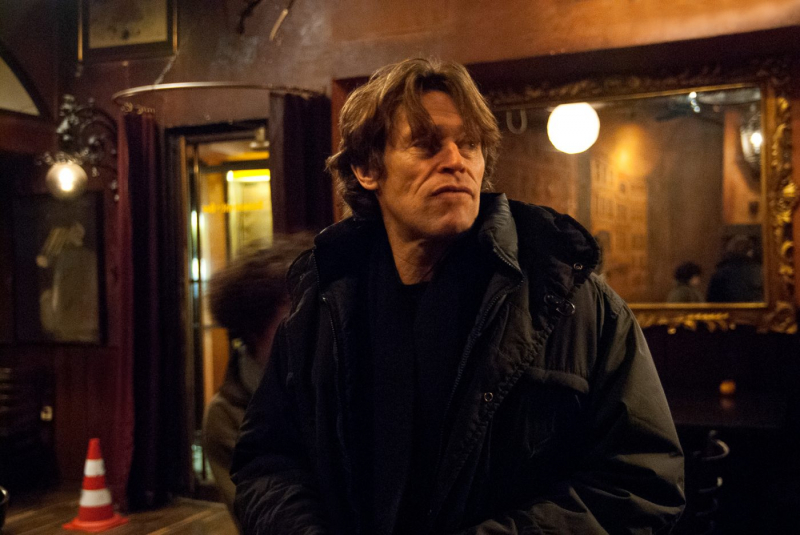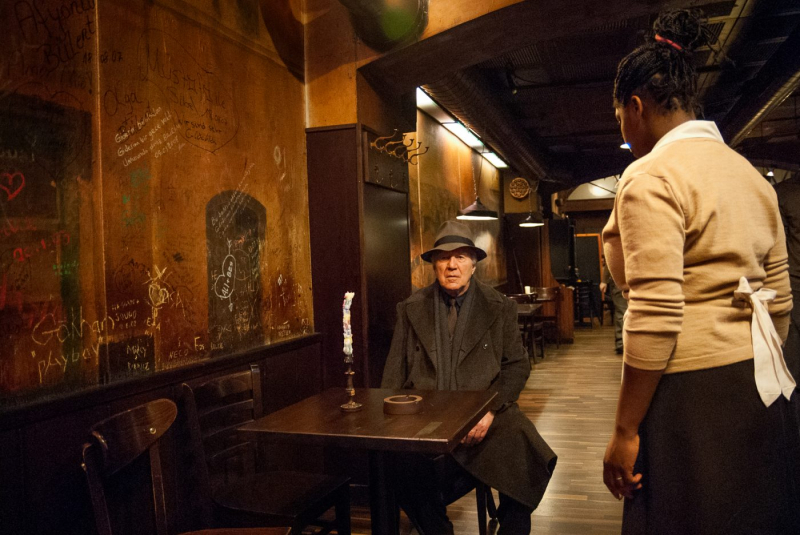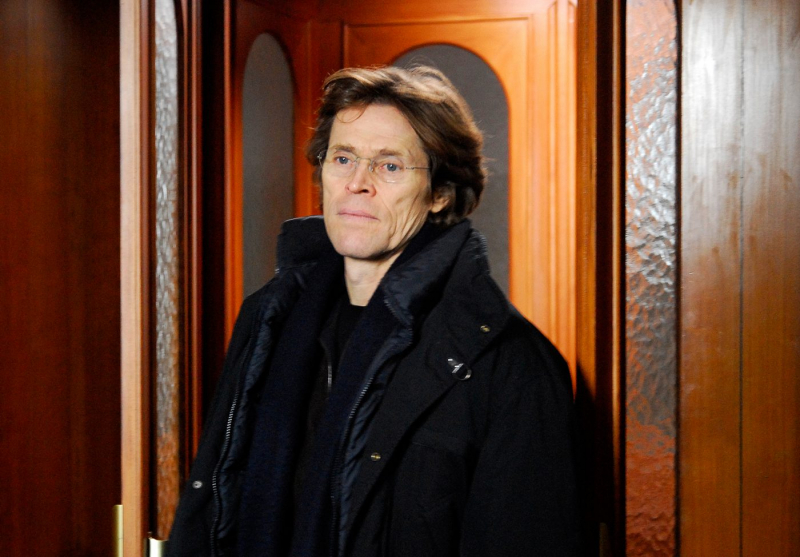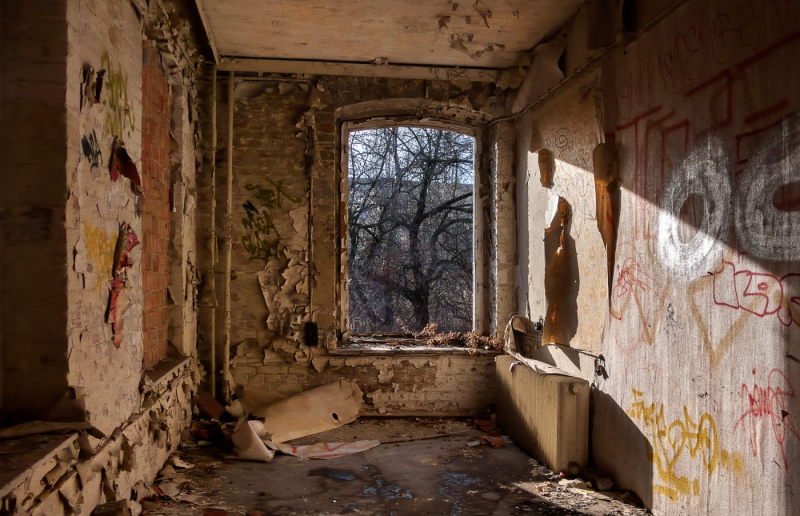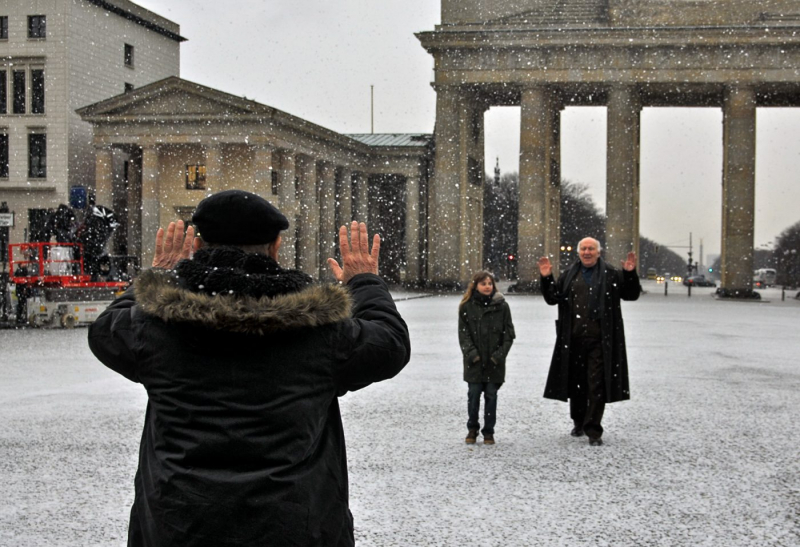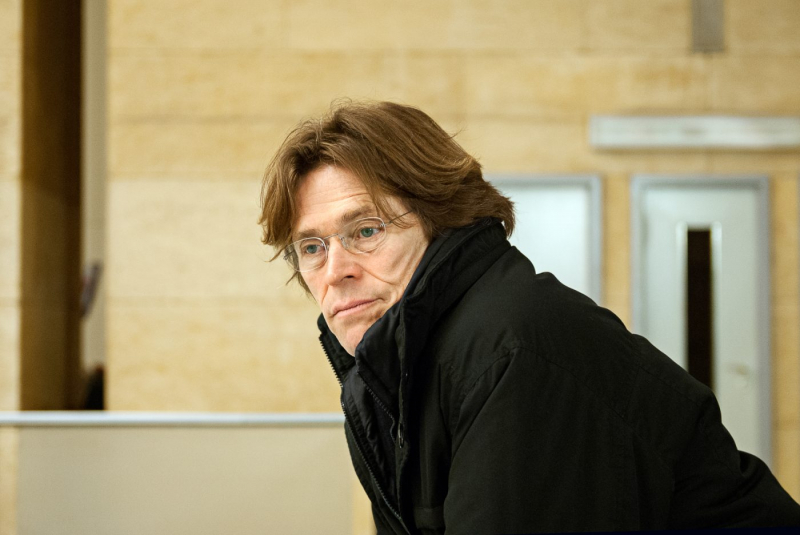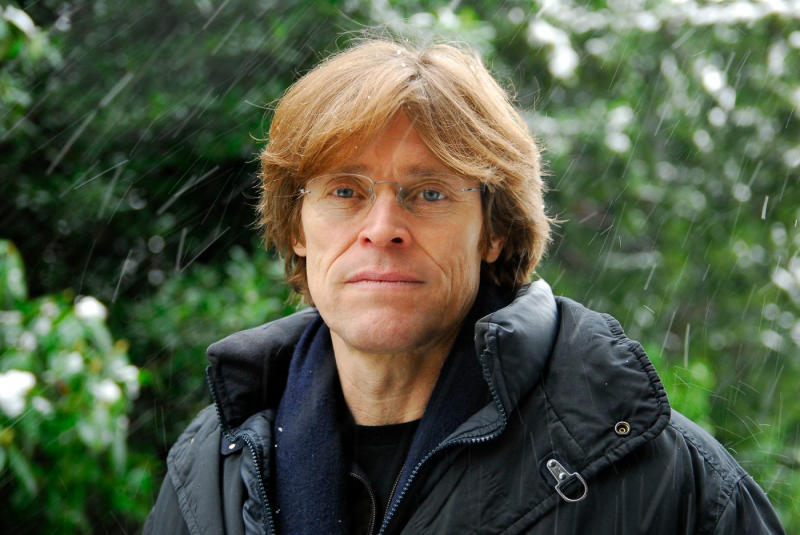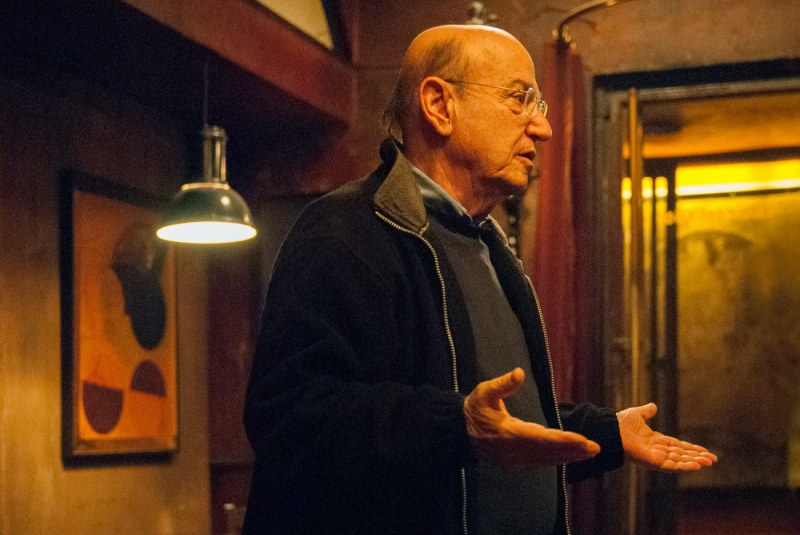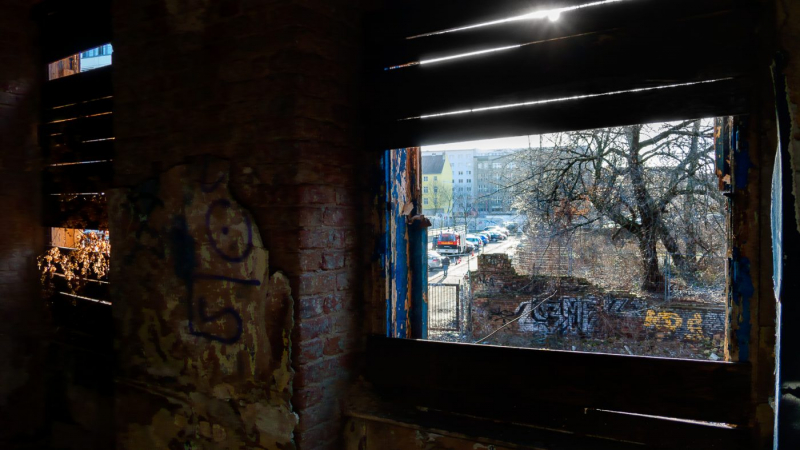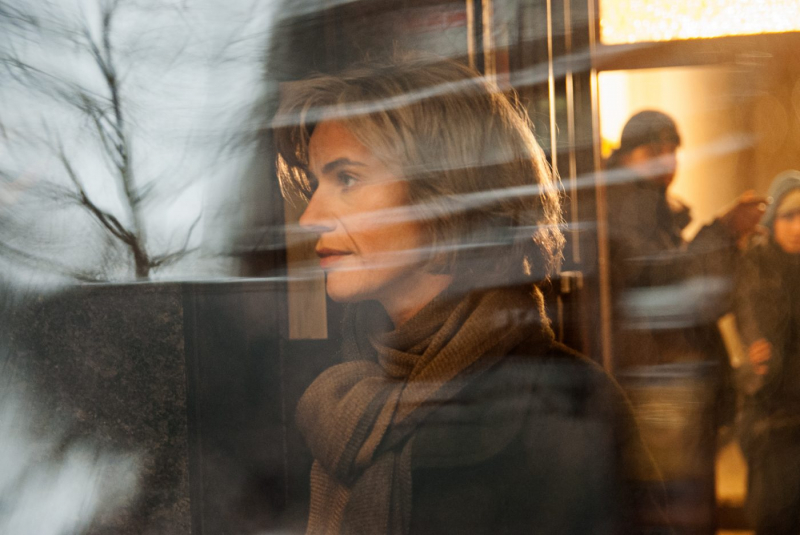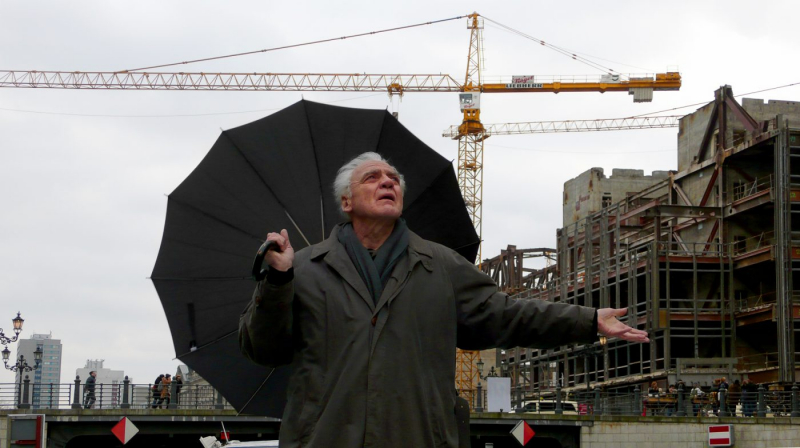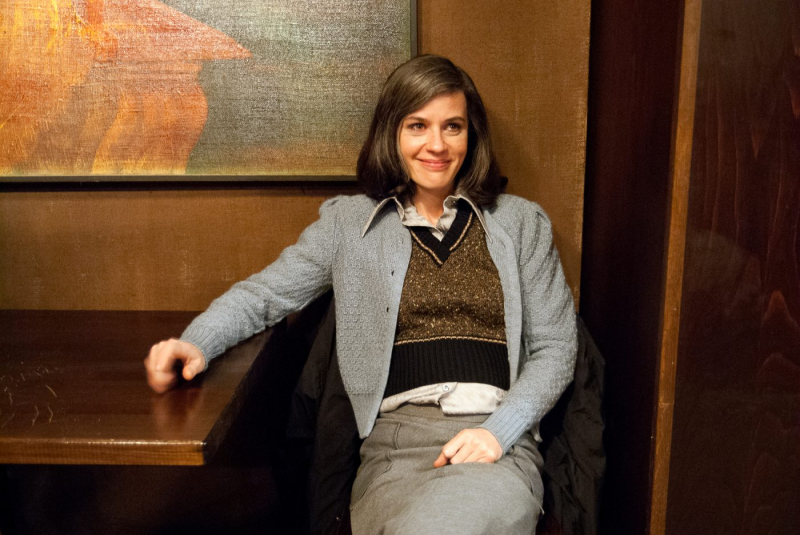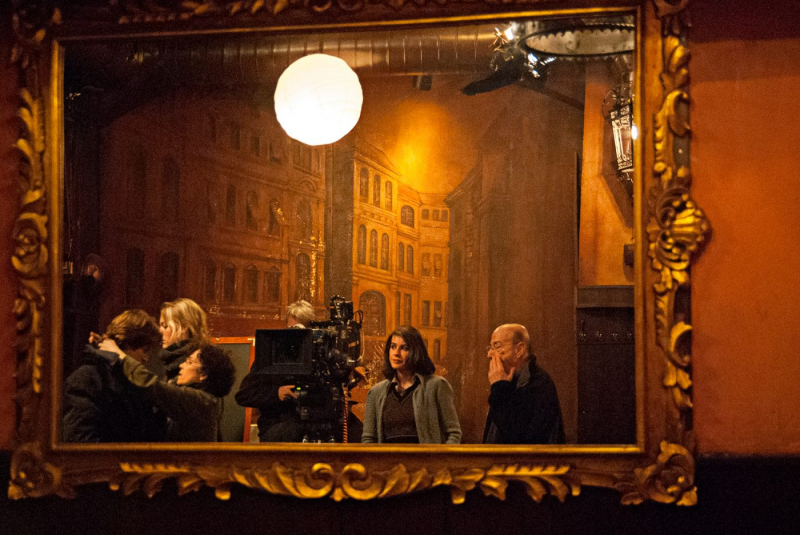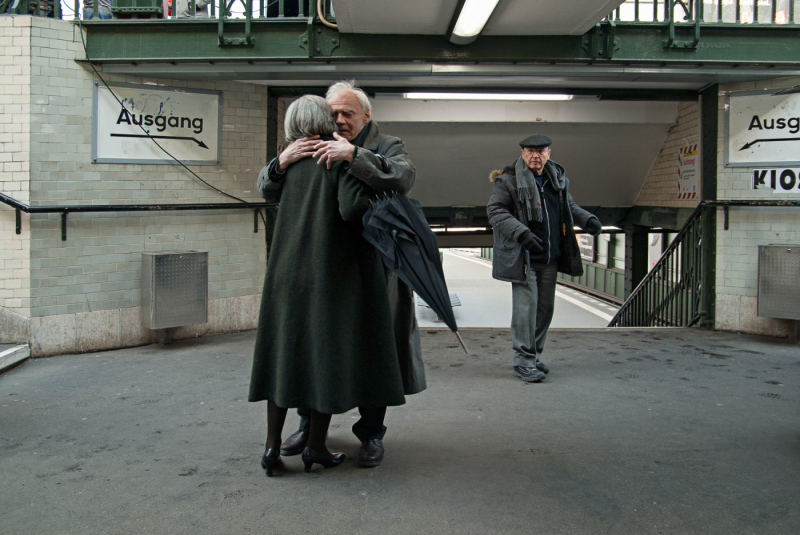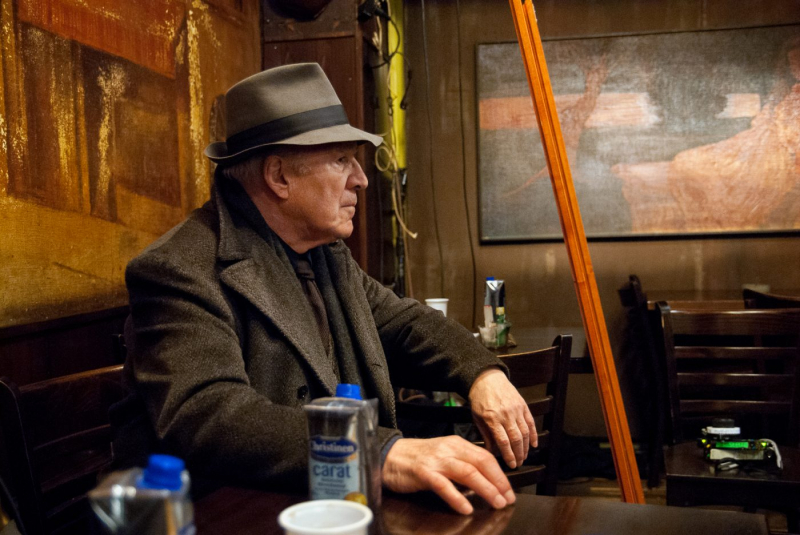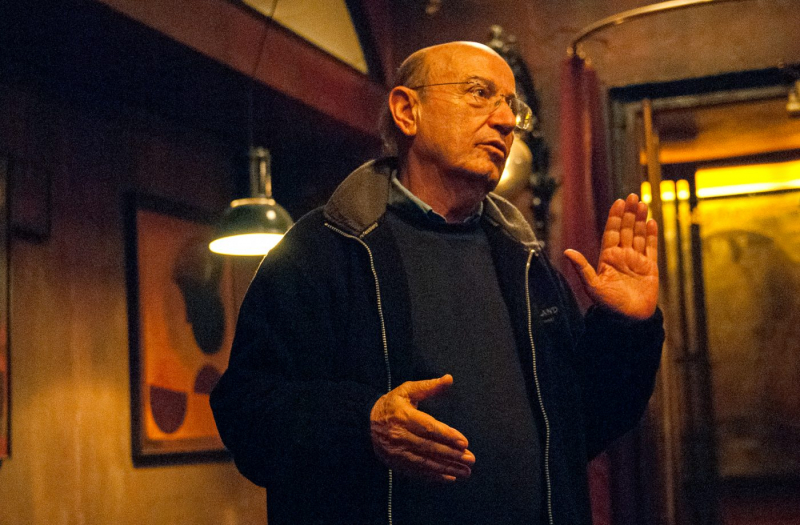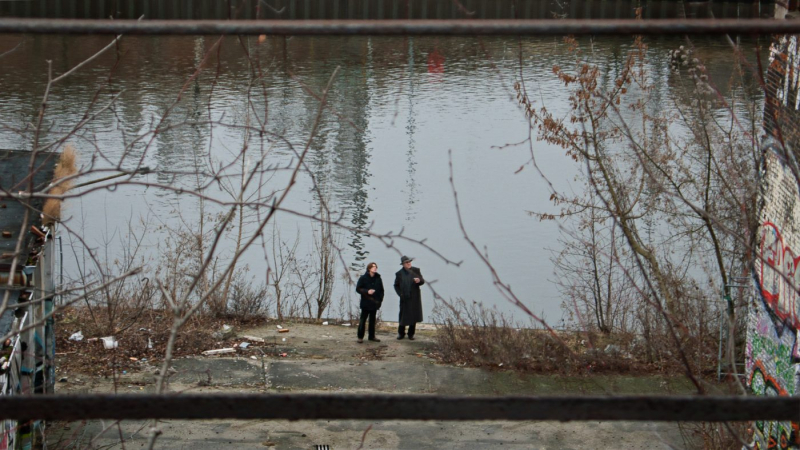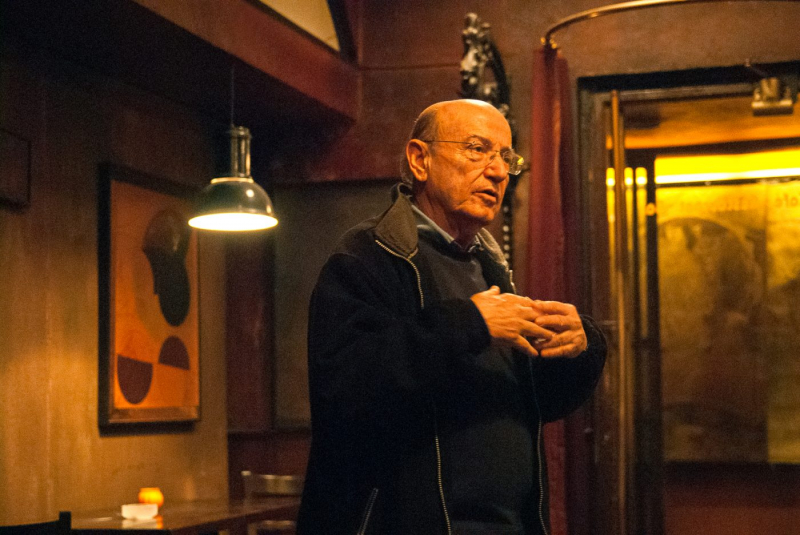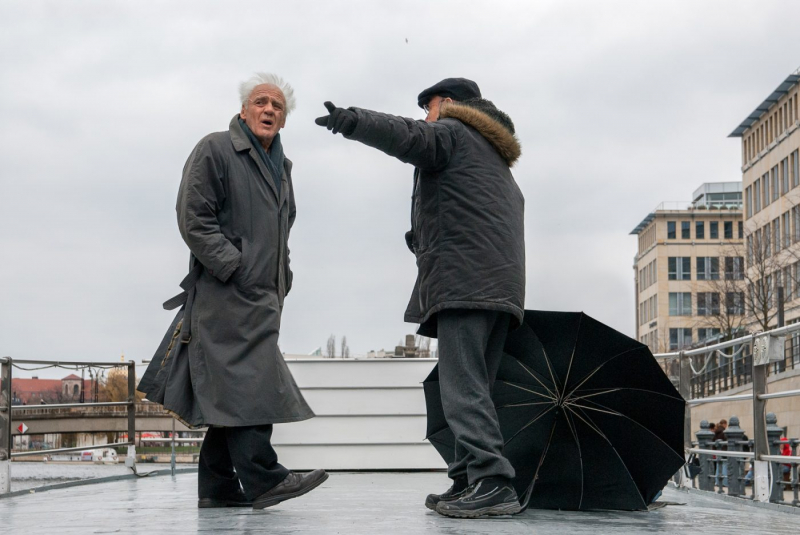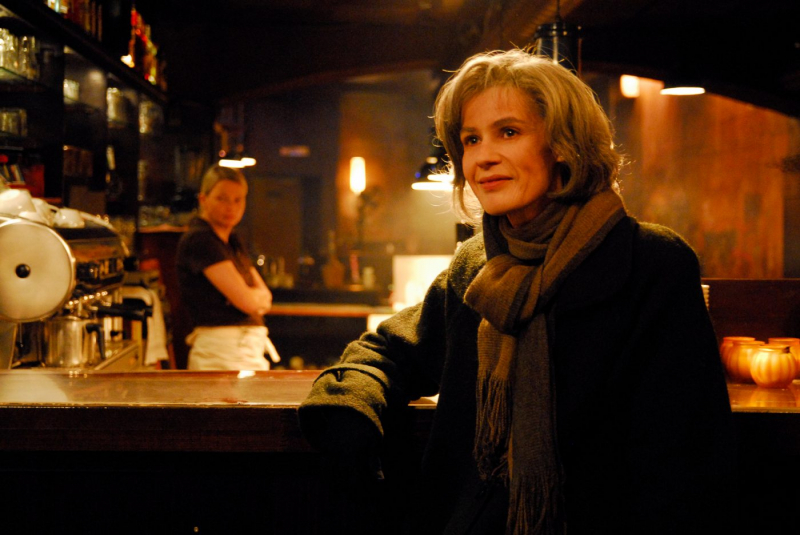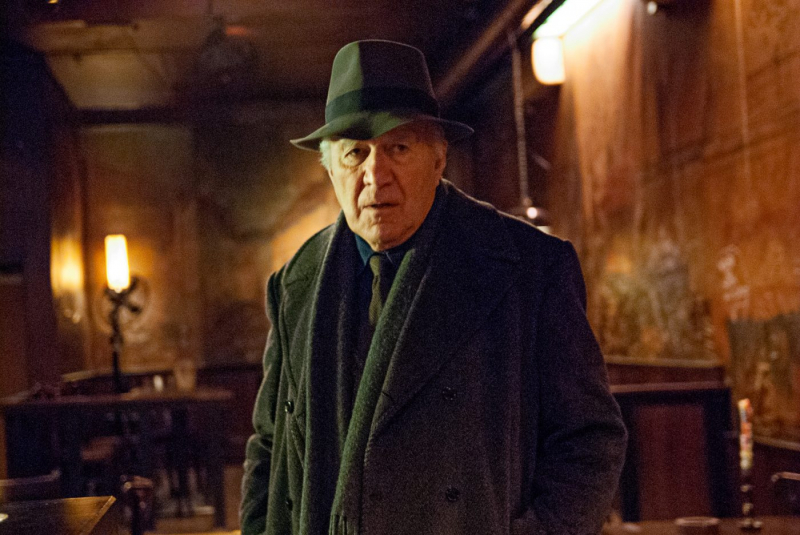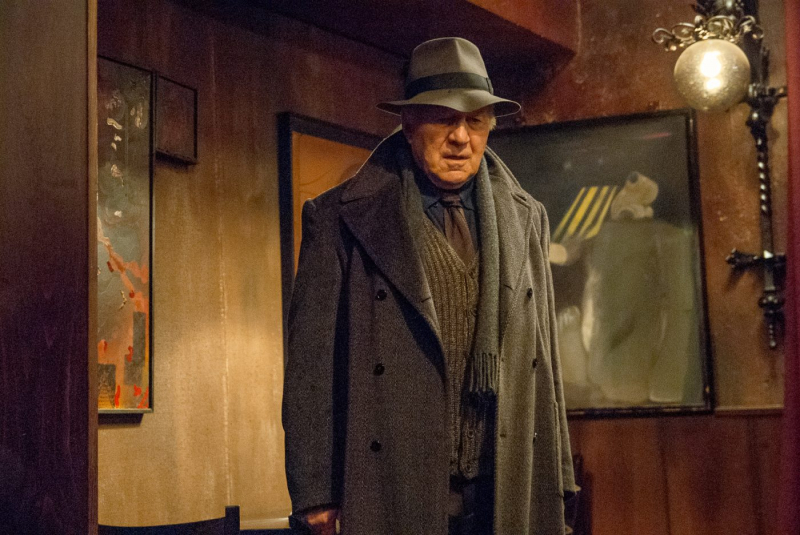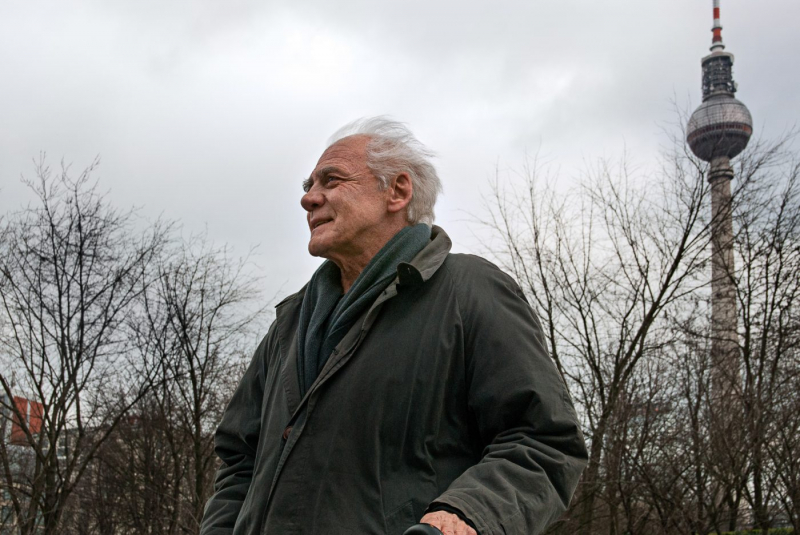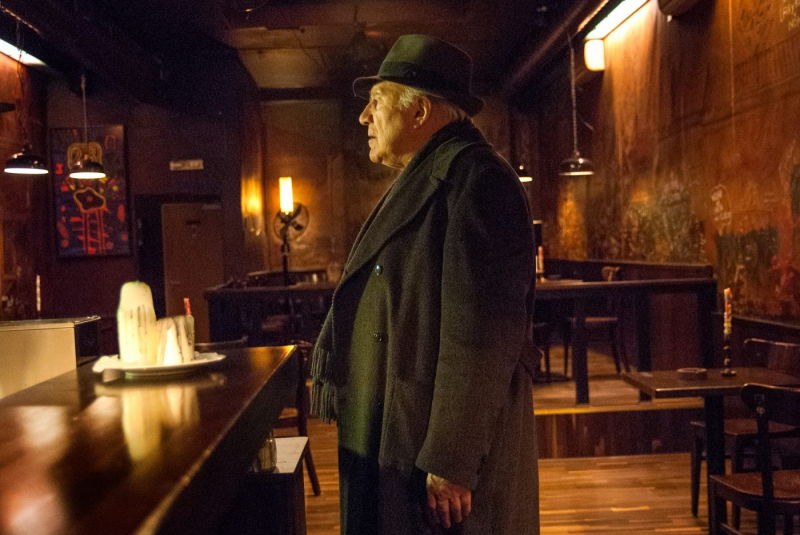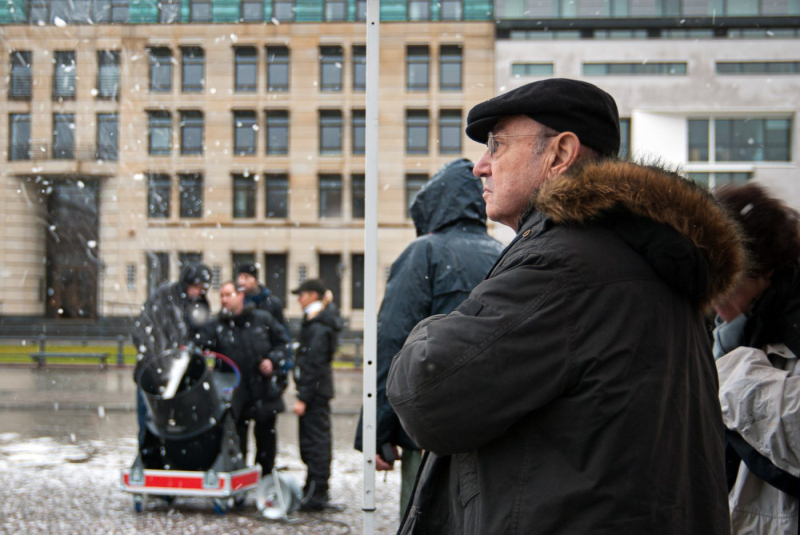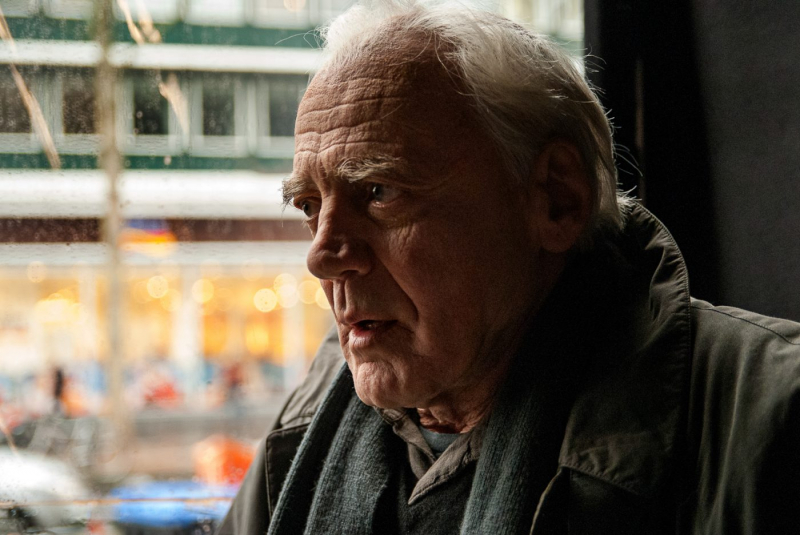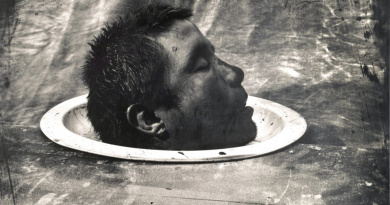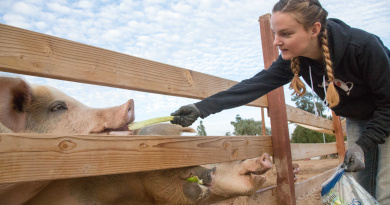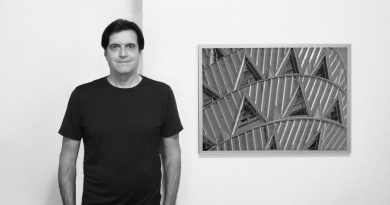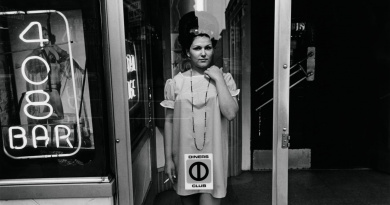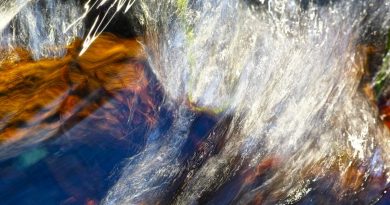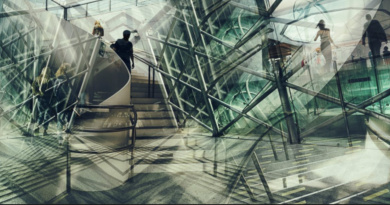Faces and Spaces of Theo Angelopoulos’ film “The Dust of Time” – Photos by Kanella Tragousti
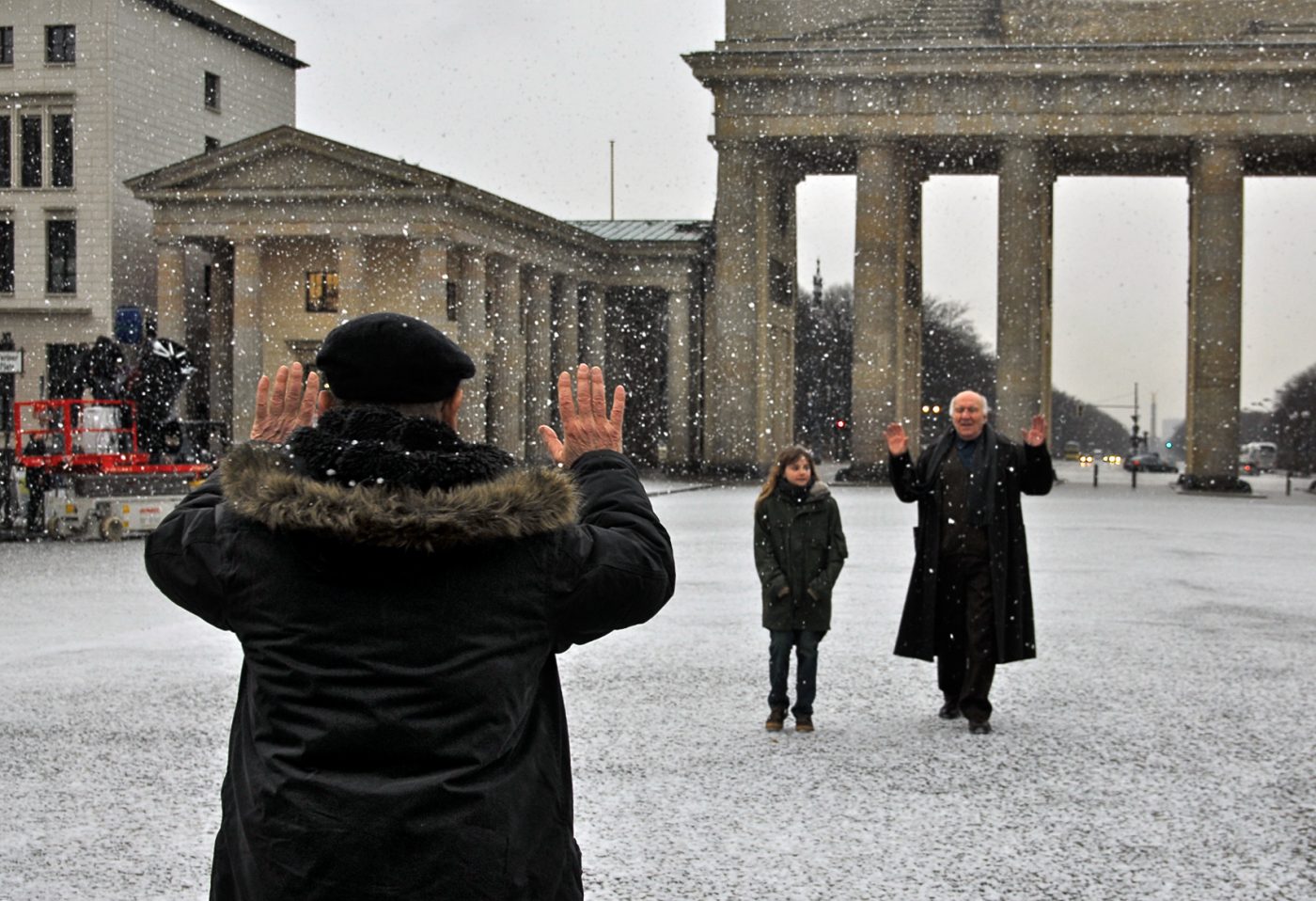
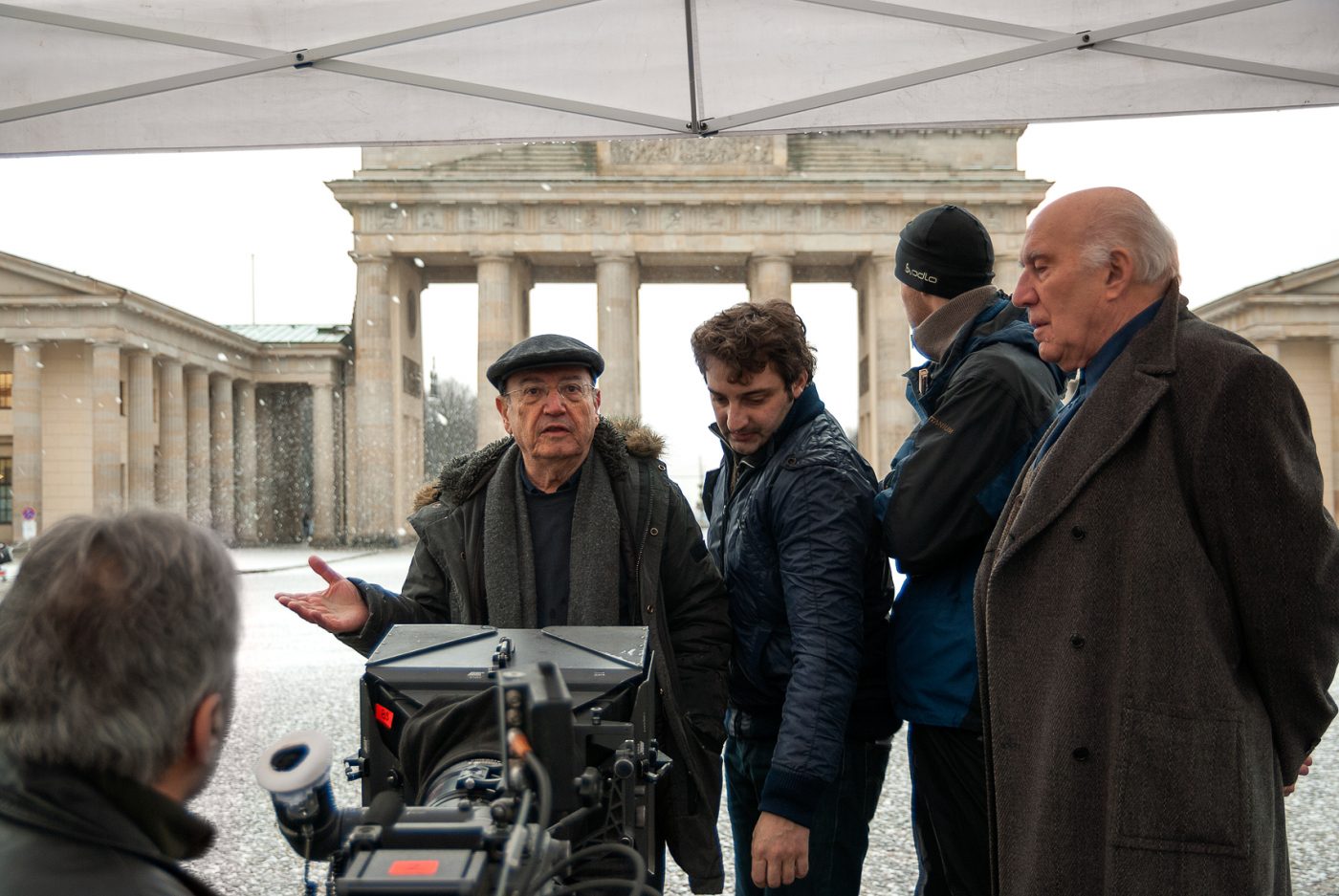
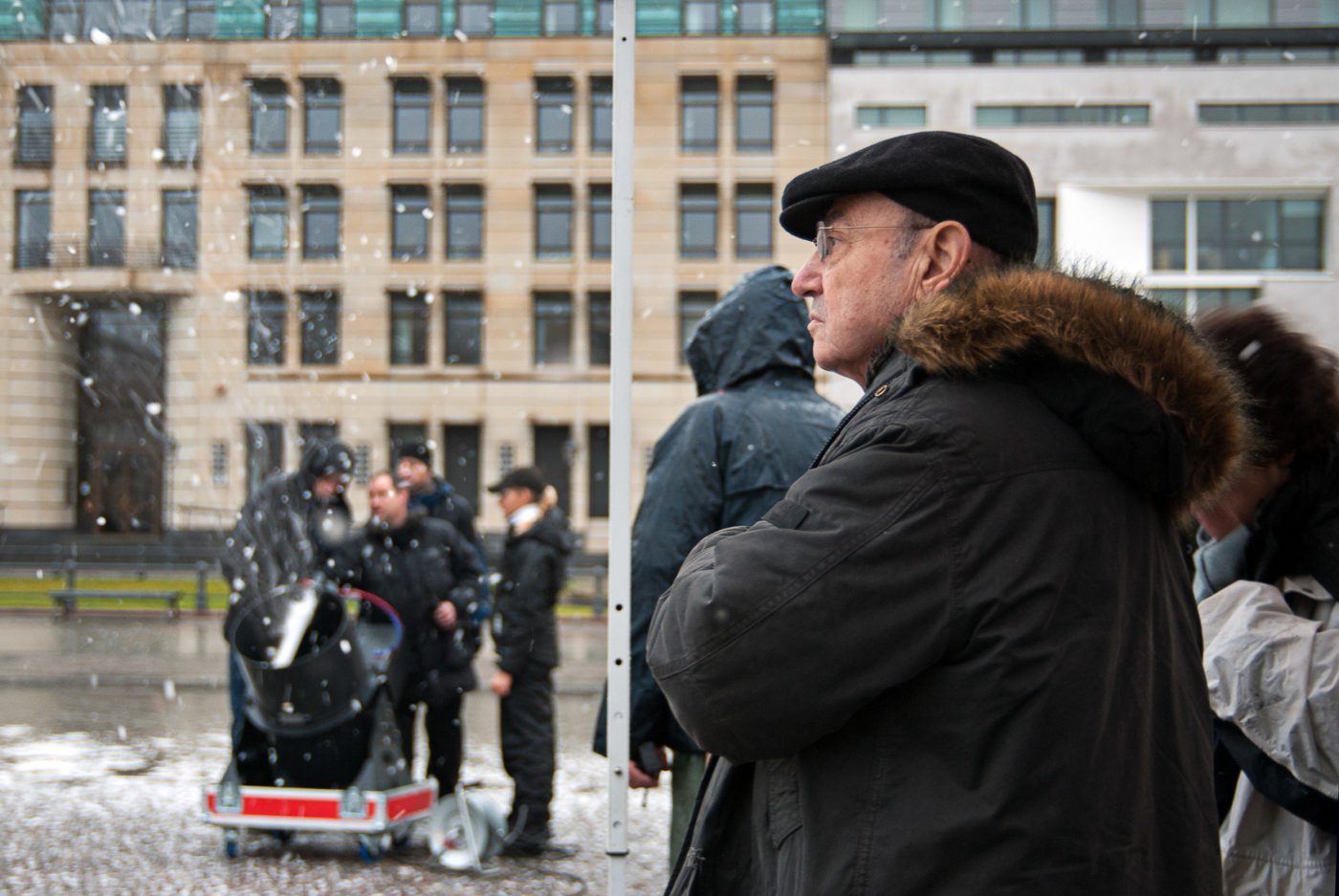

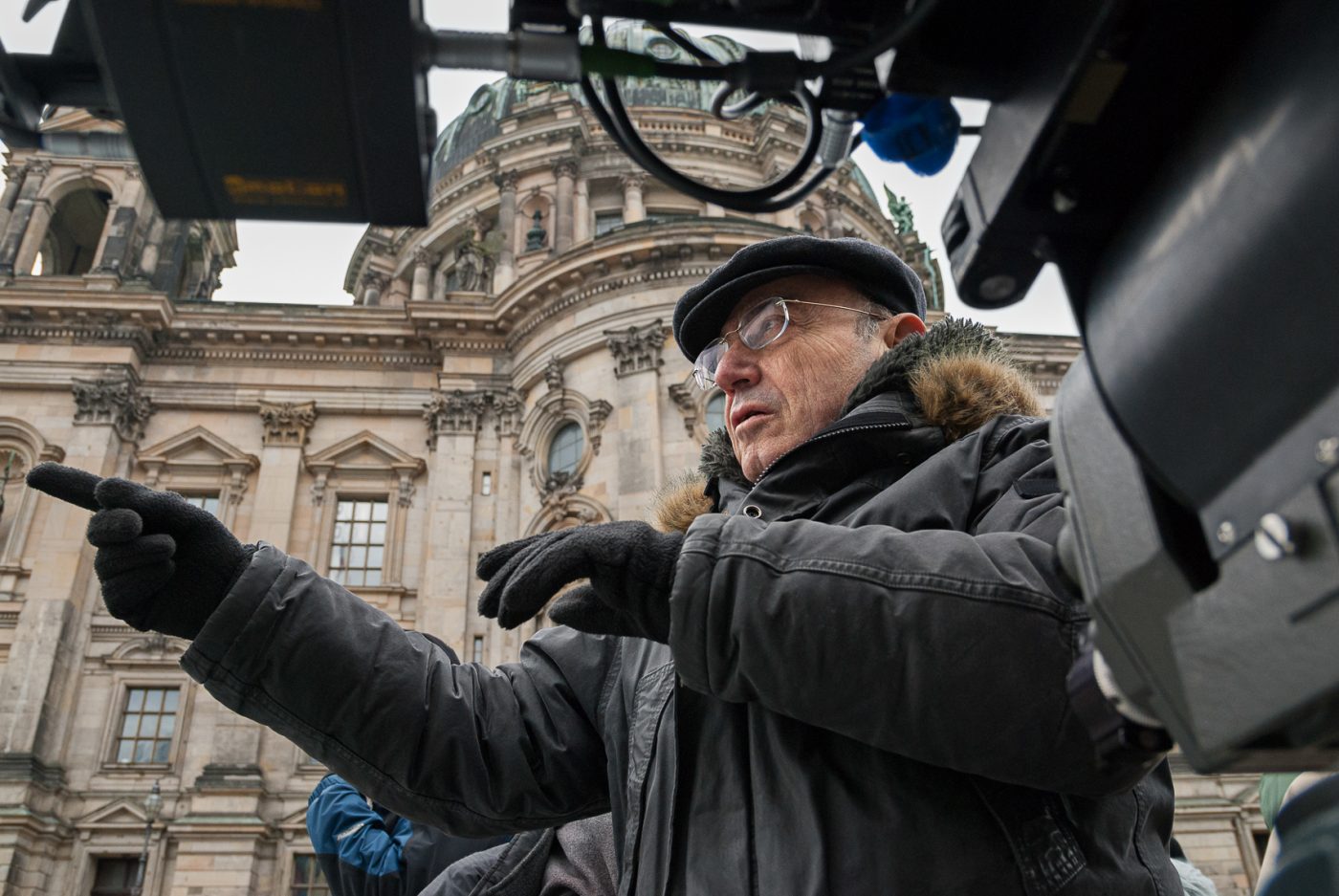
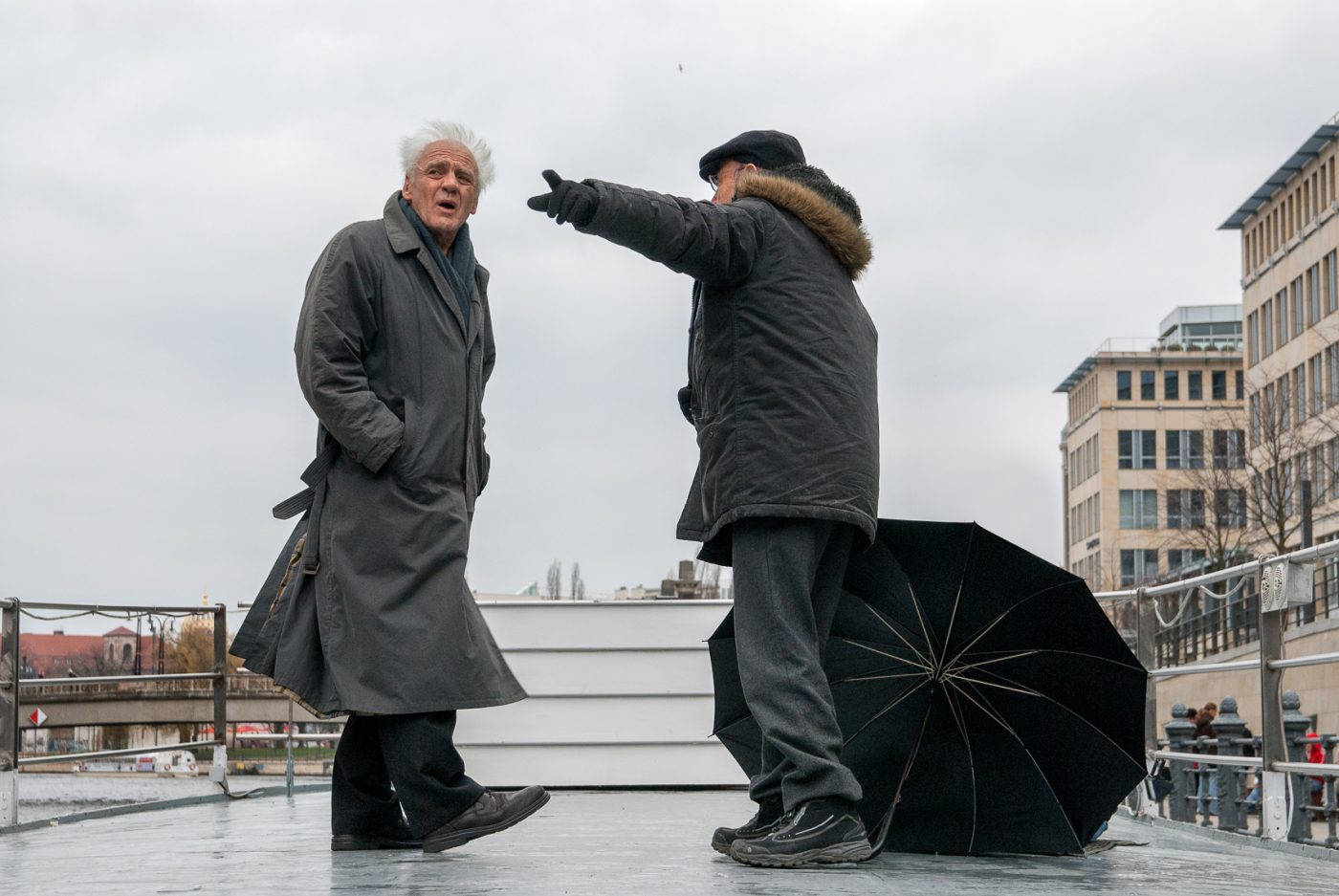
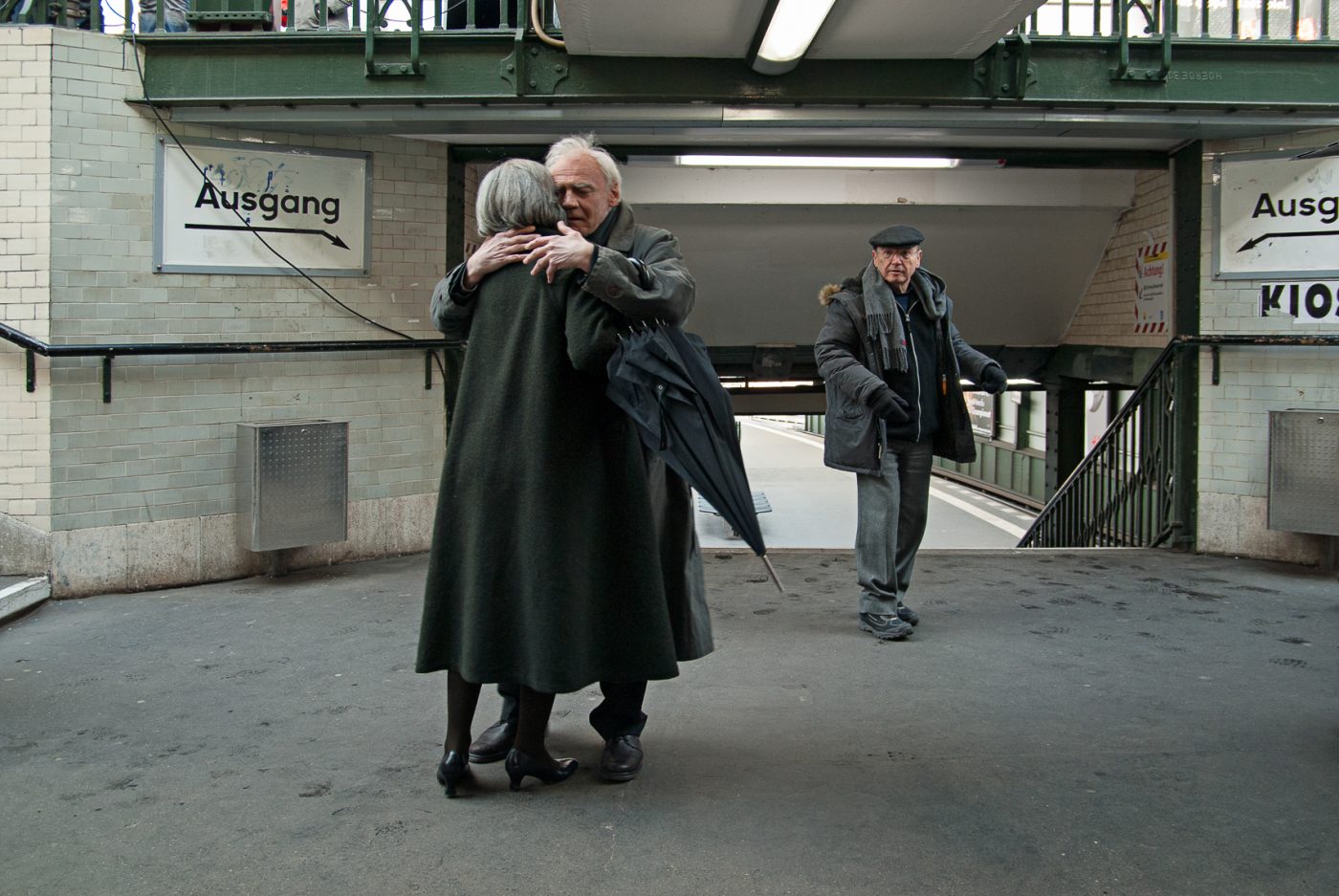
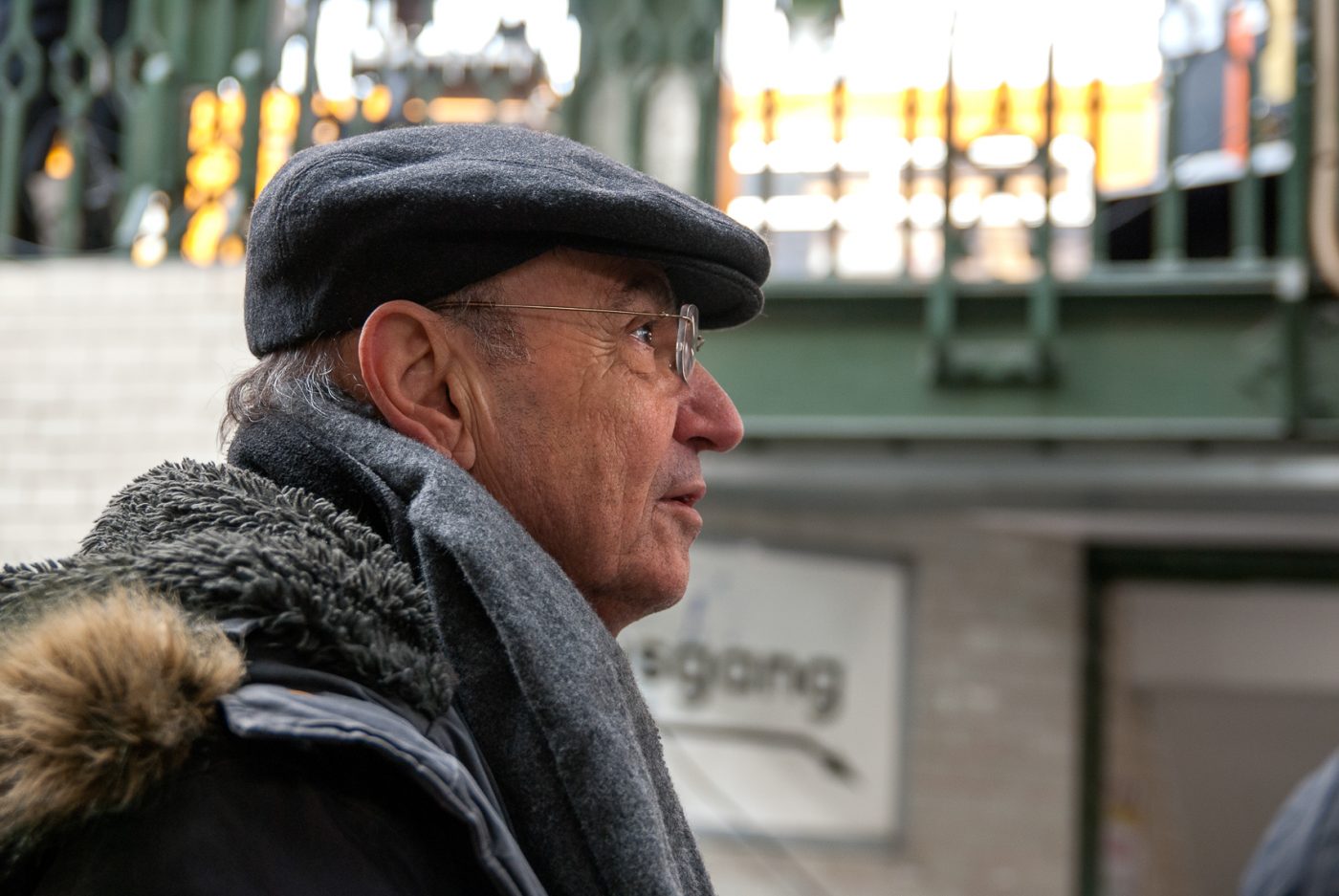

Michel Piccoli and Tiziana Pfiffner © Nelly Tragousti
Faces and Spaces
of Theo Angelopoulos’ last film
“The Dust of Time”
Photographs by Kanella Tragousti
by Helene Varopourou
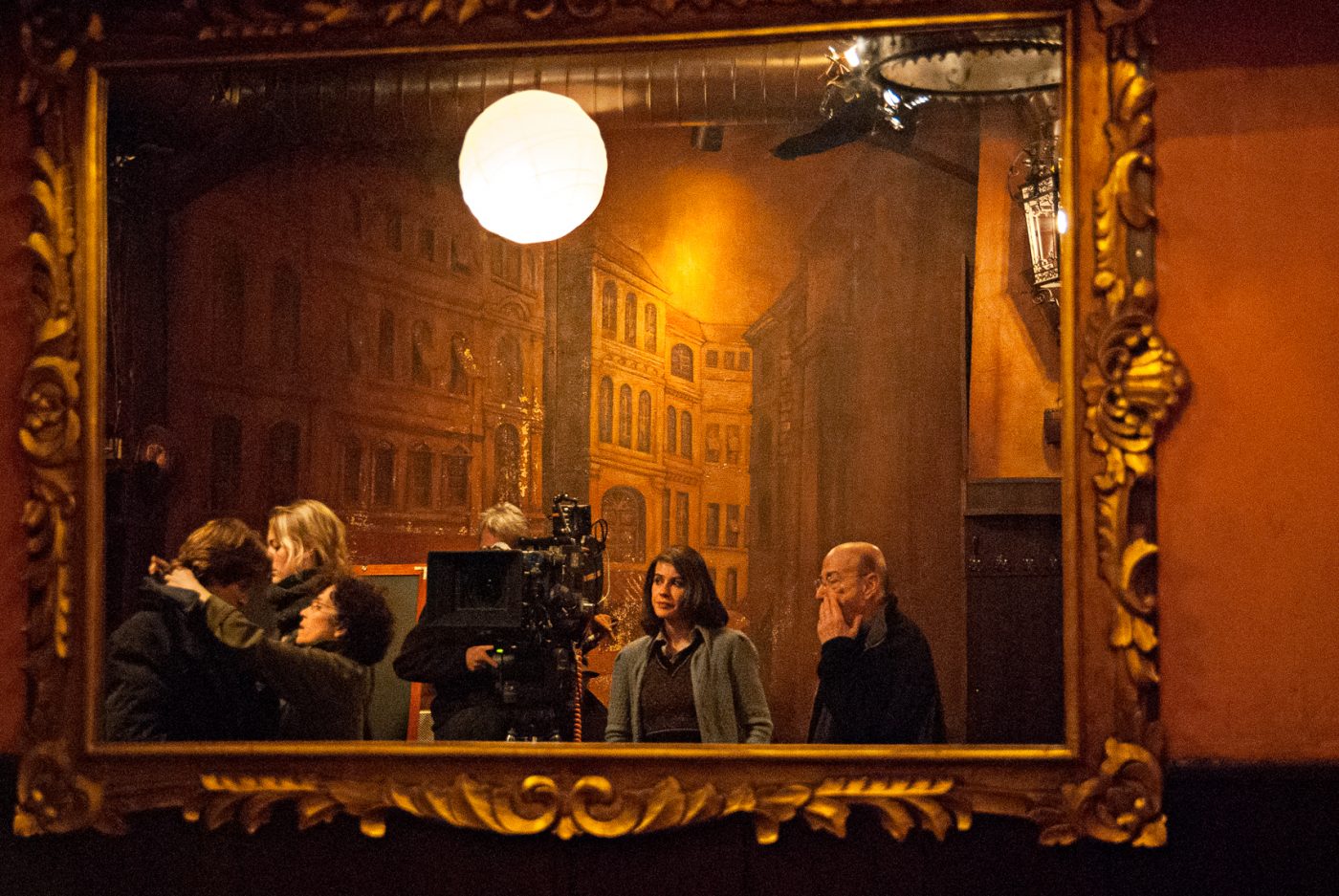
Theo Angelopoulos, Irène Jacob, Willem Dafoe © Nelly Tragousti
Nelly Tragousti's photographs recall faces and spaces from those days when Theo Angelopoulos was busy shooting his last completed film, The Dust of Time, in Germany and Berlin, in particular, the figure of the great Greek director is in the foreground - his face under the camera equipment, his gestures in conversation, during instructions or explanations to the actors and the team.

Michel Piccoli and Theo Angelopoulos © Nelly Tragousti
The beauty of photography, as we know, has its laws. If the photographic image is too beautiful, it looks slippery, the gaze slips away immediately, the photo doesn't speak to me, it only speaks of something. And yet some photos are beautiful, very beautiful. Their secret probably lies in the fact that their peculiar beauty contains something else: Sadness.

Michel Piccoli © Nelly Tragousti
The fundamentally melancholic character of all photography stems from the fact it always has something of a silent memory about it. This invocation of the dust of memory can emanate from the captured space, from an aging face, or even from a single detail that has perhaps come into the picture quite unintentionally. The photographs gathered here unite these traits of important photography impressively. The spaces repeatedly open up an almost infinite expanse to the imagination, sometimes in their emptiness, sometimes through the associations that cling to visible, concrete little things. The face speaks to us directly here because time can be read in it. The detail tells us: what I see now was once there, alive, it vouches for reality. Everyone finds a special detail in the photographs capturing their gaze, despite or exactly because it means absolutely nothing - what Roland Barthes called the "punctum" of photography.
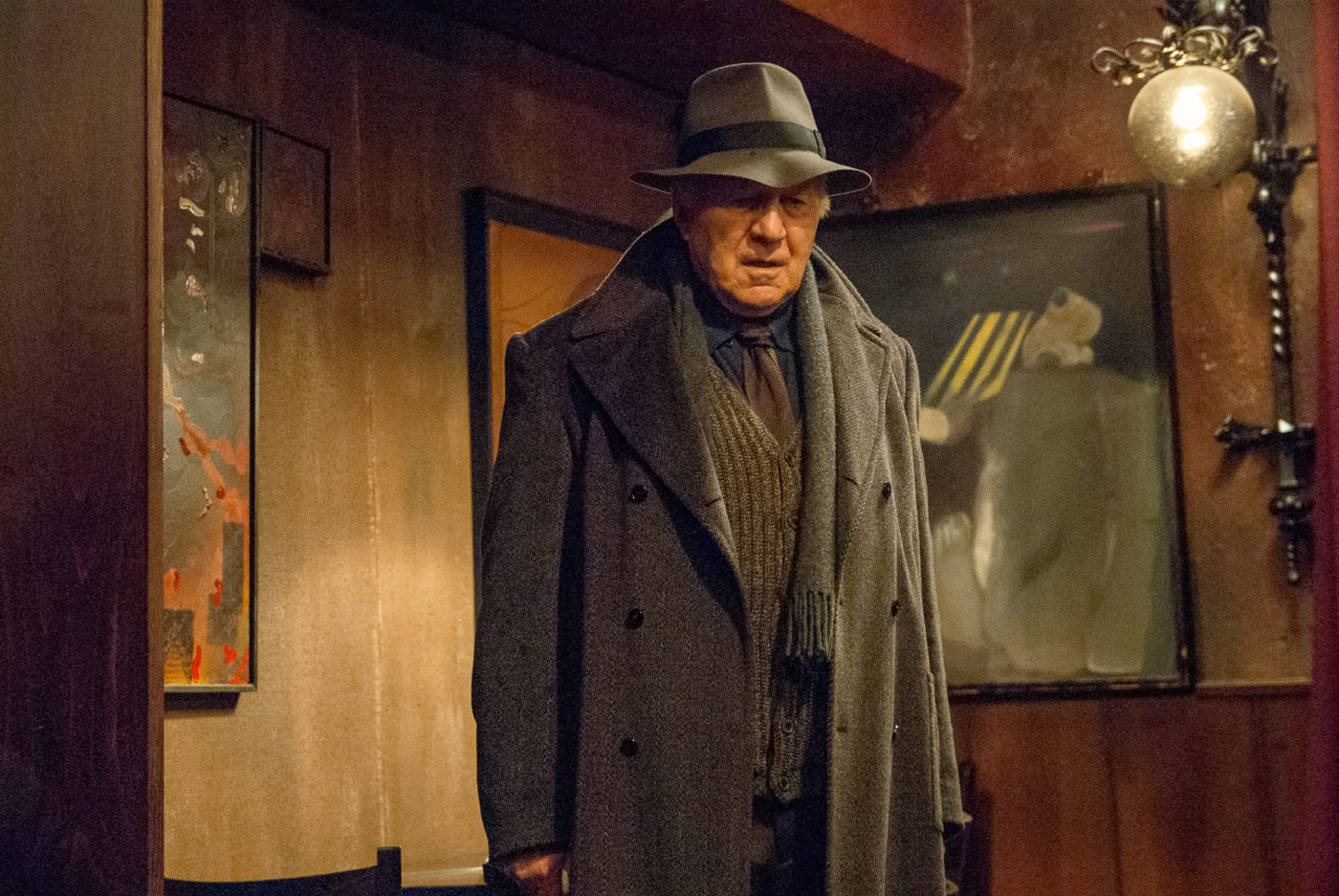
Michel Piccoli © Nelly Tragousti
For example the series of photographs of Michel Piccoli. There is the room, that pub, which already in these photos looks as if it comes from another, long-gone time. A nostalgic brown tinge, reminiscent of ancient family photos. The beauty of space, like Theo Angelopoulos always knew to create in his film work, a space that in these photos seems to be quietly humming an old song. Mysteriously, they seem to us like uninhabited places, showing an almost impersonal emptiness, even if there is a human being to be seen in them. They wait patiently, as it were, to be occupied by filming and filled with noise and activity.

Michel Piccoli © Nelly Tragousti
In this space a figure: the aged Michel Piccoli in hat and coat. Piccoli's face has inscribed itself in the memory of cinema, an interesting, a handsome man. We see the aged face of this actor. It looks knowing, serious. And we sense, guided by the art of photography, that "dust of time" that served Theo Angelopoulos as a poetic film title. We feel it in the actor's posture, in the coat collar, in the fringes of the warming scarf. (For me, the "punctum" here was the fold in the front of his hat brim).
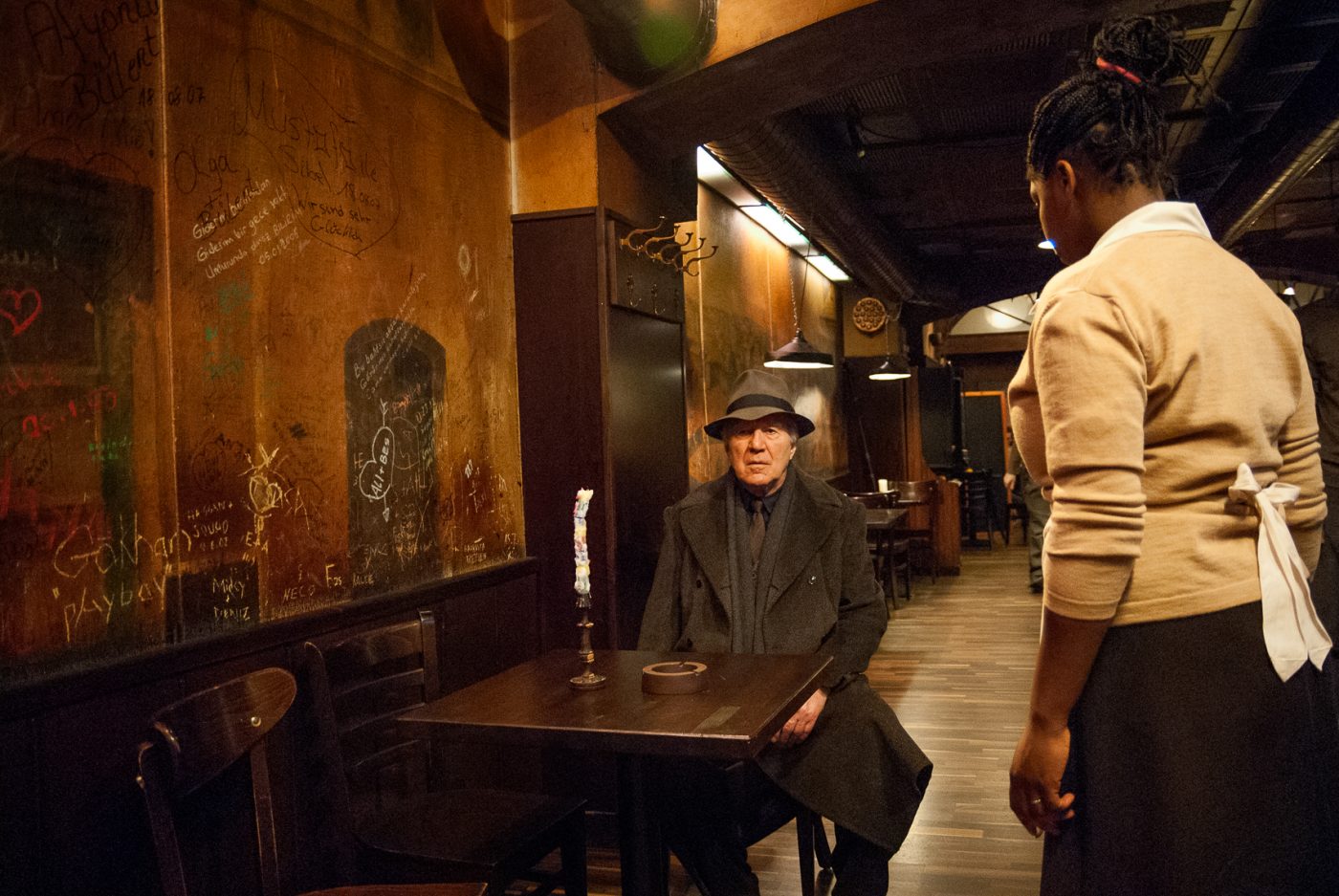
Michel Piccoli © Nelly Tragousti
There is an obvious scenic quality to Nelly Tragousti's photographs. If you let the picture of Bruno Ganz and Irène Jacob sink in for a while, then you "see": Bruno Ganz's thoughtful gaze into the distance, Irène Jacob's to the ground. And in both gazes, it becomes perceptible that they are basically directed inwards, into nothingness where the great nearness and the infinite distance of the world become one over time. The photograph seems to concentrate an entire story in a single scene. This is the power of the still image: to mobilise the viewer's imagination, to set it in motion. This may also be the reason why, for some of the very great directors of the "moving" image in our era, the slowness of their film works is proverbial. They do not want to sacrifice the in-depth and thinking gaze to the sensation of the rapid and, increasingly in mainstream cinema, almost precipitating speed of the picture narrative.
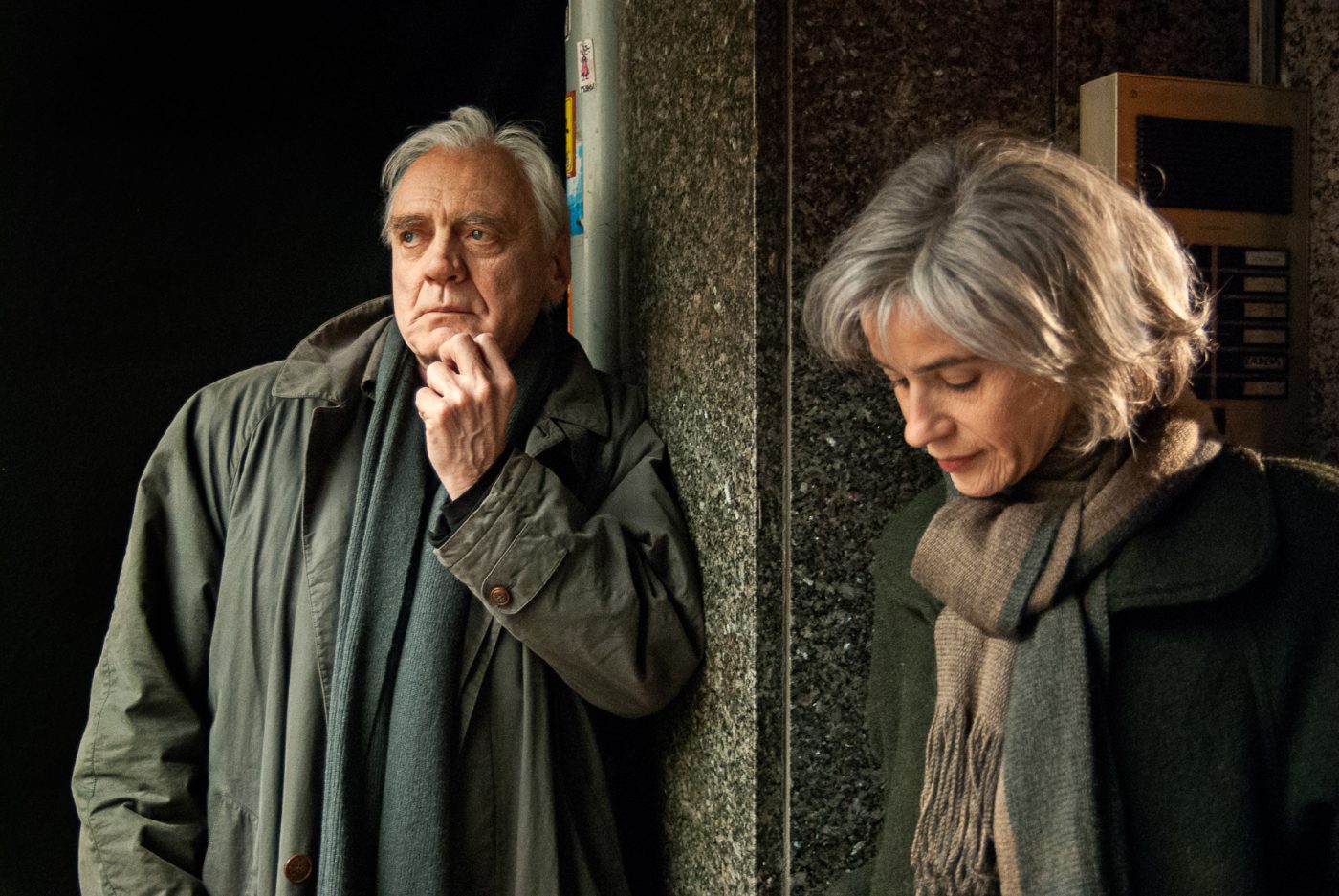
Irène Jacob and Bruno Ganz © Nelly Tragousti
These photographs are precious, forever capturing the snowflakes of the moment, the moment of a pause, an "in-between". Thus, each of the photographs becomes the embodiment of a paradox: they are an "infinite pause" filled with memory, the memory of an epochal master of cinematography.
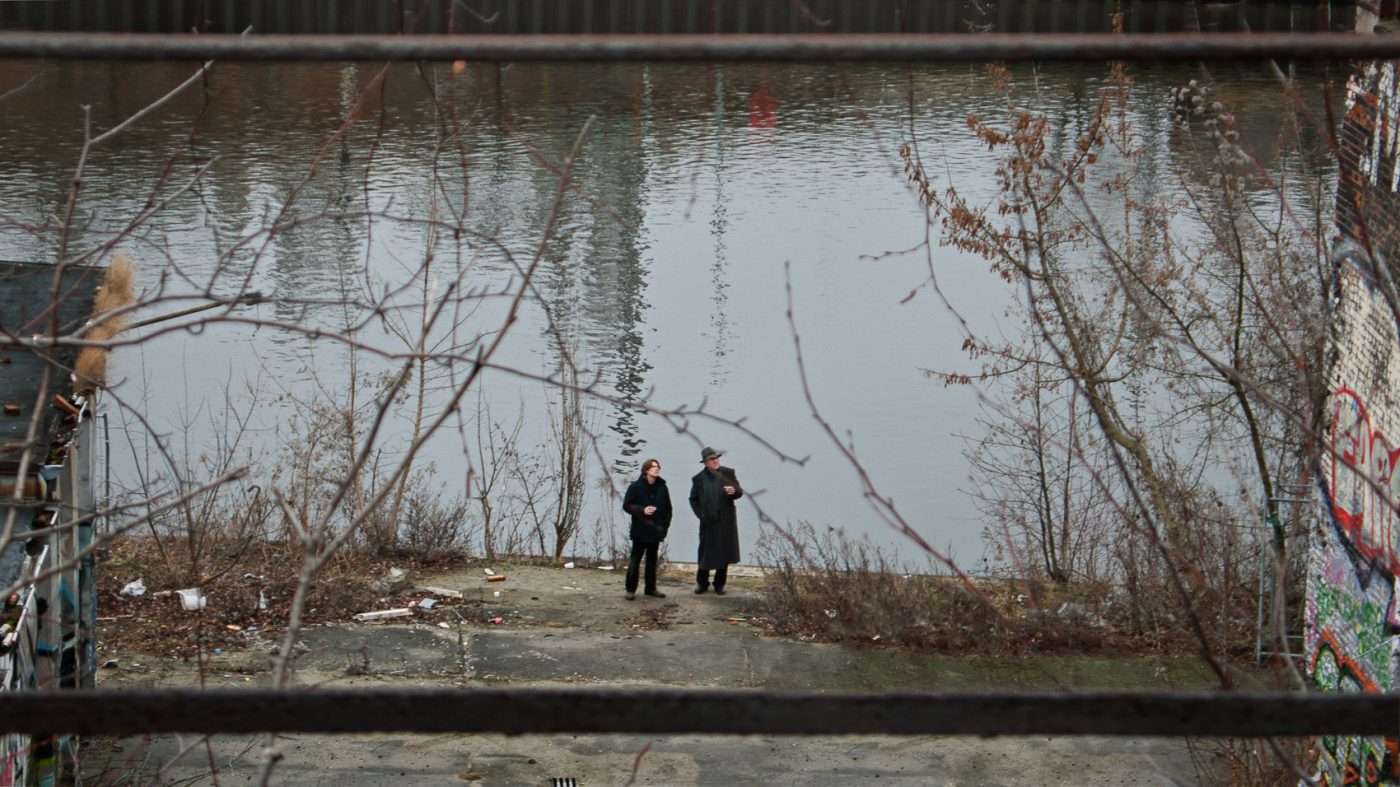
Willem Dafoe and Michel Piccoli © Nelly Tragousti
The „Dust of Time“ is a 2008 movie by Theo Angelopoulos. The international co-production is the second part of a trilogy Angelopoulos began in 2004 with the film „The Earth Cries", which remained unfinished due to his death in 2012. „The Dust of Time" was shot from January to February 2008 in Rome and Berlin, among other places. The film was screened for the first time on 22 November 2008 at the Thessaloniki International Film Festival.
Click on an image to open the gallery
Kanella Tragousti
Kanella (Nelly) Tragousti was born in Amalias Greece, in 1959. She studied philology from 1976 to 1980 at Athens University, from 1980 to 1983 semiology in Paris at “Ecole Pratique des Hautes Etudes“ of the Sorbonne University (Diploma about the relation between text and image in photography, cinema and painting). In 1985 she attended the painting workshop of Katherina Merzani at the „Ora“ gallery in Athens. From 1983 to 1987 Kanella worked in Athens for several TV and movie productions and films as translator, scriptwriter and free-lance photographer. She attended from 1990 to 1992 the engraving course organized by Jens Jensen at the Academy of Art. Kanella has lived in Berlin since 1987 where she works as a free artist. Since then she had several group and single exhibitions in Germany and Greece.
Helene Varopoulou
Helen Varopoulou was born in 1945 on the Greek island of Kefalonia. She studied law in Athens and theatre, art, and media studies in Paris. From 1974, she has worked as a theatre and art critic, writing for various Greek and international newspapers and magazines, notably the Sunday newspaper To Vima published in Athens.
She has curated numerous art exhibitions and lectured at the Universities of Athens, Patras, Thessaloniki, and Frankfurt / Main, among others.
Between 1984 – 1992, she was the Chairwoman of the Greek section of the International Theatre Institute (ITI). She founded and directed the Argos/Peloponnese Festival (1992 - 1997) and has collaborated with the Athens Concert Hall (Megaro Mousikis) as an artistic advisor.
From 2000 - 2009 she directed the Summer Academy of the Greek National Theatre.
She is the main translator of Heiner Müller in Greek. She has also translated plays by Aeschylus and Euripedes, from ancient Greek, and texts by Brecht, Broch, Goethe, Benjamin.
Our online magazine is free of advertisements. We do everything out of love and dedication. We are not profit oriented. Support Tagree that the magazine remains ad-free and the monthly costs can be paid. TAGREE, I love your cultural work, I donate to show you my appreciation, voluntary, one-time or regular monthly or per quarter:


